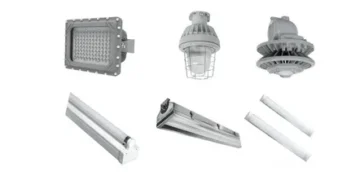Maintaining healthy trees enhances your landscape’s beauty, improves air quality, and increases your property’s value. One crucial part of tree maintenance is deadwood removal. Removing dead branches prevents potential hazards, encourages growth, and keeps your trees in top shape. If you’re thinking of taking on this task yourself, here’s a complete guide on safely handling deadwood removal.
What Is Deadwood Removal?
Deadwood removal is the process of cutting off dead, dying, or broken branches from a tree. These branches can result from age, disease, storm damage, or pests. If left unchecked, deadwood can become hazardous—posing risks to people, property, and the health of the tree itself.
Dead branches can weaken a tree’s structure, making it more susceptible to damage during heavy winds or storms. Regularly pruning these parts not only keeps the tree healthy but also reduces the risk of accidents caused by falling branches.
Why Is Deadwood Removal Important?
While removing deadwood improves the tree’s appearance, it also serves several critical purposes:
- Prevents Accidents: Dead branches can break and fall without warning, posing safety risks to people, pets, and property below.
- Improves Tree Health: Pruning away dead sections allows the tree to focus its energy on healthy growth rather than trying to sustain dying branches.
- Pest Prevention: Deadwood often attracts pests, including termites and beetles, which can spread to healthy parts of the tree or even nearby structures.
- Enhances Appearance: Removing unsightly dead branches improves the overall look of the tree and landscape.
When Should You Perform Deadwood Removal?
The best time for deadwood removal depends on the tree species and climate. However, here are general guidelines:
- Late Winter to Early Spring: This is usually the best time to prune because the tree is still dormant, and new growth hasn’t started yet.
- After Storms: Inspect your trees after heavy storms and remove any visibly damaged or hanging branches.
- Year-Round for Safety: Dead branches that pose immediate hazards should be removed as soon as possible, regardless of the season.
Essential Tools for DIY Deadwood Removal
Before starting, make sure you have the right tools for the job. Here’s what you’ll need:
- Pruning Shears: Ideal for cutting small branches (up to ¾ inch thick).
- Loppers: Best for branches between 1 to 2 inches thick.
- Pruning Saw: Useful for larger branches that can’t be cut with shears or loppers.
- Pole Pruner: Helps you reach higher branches safely without climbing.
- Gloves and Safety Glasses: Protect your hands and eyes from debris.
- Hard Hat: Essential if you’re working under large trees.
Always make sure your tools are clean and sharp to ensure clean cuts that promote healthy regrowth.
Step-by-Step Guide to Safe Deadwood Removal
1. Inspect the Tree Thoroughly
Begin by examining the tree to identify dead branches. Deadwood typically looks dry, brittle, and often has no leaves, even in the growing season. Tap the branch—dead branches usually produce a hollow sound.
2. Plan Your Cuts
Mark the branches you need to remove. Prioritize branches that are:
- Hanging dangerously
- Close to buildings or power lines
- Crisscrossing with other branches
3. Make Clean Cuts
Follow the natural shape of the tree and cut just outside the branch collar (the swollen area where the branch meets the trunk). Avoid cutting too close to the trunk, as this can harm the tree.
4. Use Proper Technique
When removing large branches:
- Make an undercut about 12–18 inches from the trunk to prevent the bark from tearing.
- Make a top cut a few inches further out from the undercut until the branch falls.
- Finish by trimming the stub cleanly at the branch collar.
5. Clean Up Debris
Remove fallen branches and dispose of them responsibly. Some deadwood can be chipped for mulch or composted if disease-free.
Safety Tips for DIY Deadwood Removal
- Never prune near power lines. Contact your utility company for professional assistance.
- Avoid using ladders unless absolutely necessary, and always have someone to assist you.
- Wear protective gear at all times, including gloves, glasses, and helmets.
- Do not over-prune. Removing too much live wood can weaken the tree.
If the job seems too risky or involves large trees, it’s better to call a professional tree surgeon to handle the deadwood removal safely.
Common Mistakes to Avoid
- Topping the Tree: Cutting off the top can severely damage the tree and lead to unhealthy growth.
- Over-pruning: Removing too much foliage stresses the tree and affects its ability to photosynthesize.
- Cutting at the Wrong Time: Pruning during the wrong season can leave the tree vulnerable to pests and diseases.
Benefits of Regular Deadwood Removal
Regular deadwood removal offers numerous long-term benefits, including:
- Stronger Structure: Pruned trees develop stronger limbs, reducing the risk of future damage.
- Improved Growth: Healthy branches grow more vigorously when the deadwood is removed.
- Better Aesthetics: Pruning improves the tree’s natural shape and enhances the overall landscape.
When to Hire a Professional
While DIY deadwood removal is possible for small to medium trees, there are times when professional help is necessary:
- Tall Trees: If you need to work from a height or use specialized equipment.
- Complex Jobs: Trees near structures, power lines, or with complicated branch systems.
- Disease or Infestation: If you suspect the tree is diseased or infested, an arborist can diagnose and treat the issue effectively.
Conclusion
Deadwood removal is a vital part of tree maintenance, ensuring safety and promoting healthy growth. With the right tools and knowledge, DIY deadwood removal can be both safe and rewarding. Always prioritize safety and know your limits—when in doubt, hire a professional to handle larger or more hazardous tasks.
By regularly inspecting and pruning your trees, you’ll create a safer, healthier, and more visually appealing landscape.



























